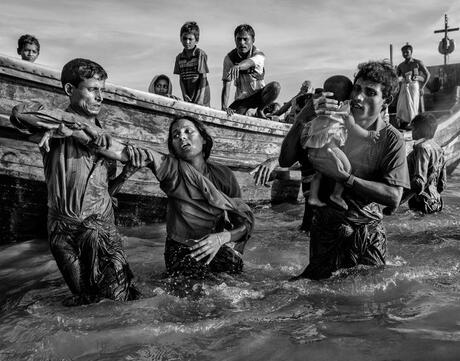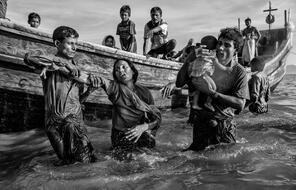
Post-Viewing: The Persecution of the Rohingya and the Persistence of Genocide
At a Glance
Language
English — USSubject
- History
Grade
6–12- The Holocaust
Overview
Overview
One of the most important legacies of the Holocaust is an idea, a promise most often expressed with the phrase “never again.” For decades, Holocaust survivor Elie Wiesel urged his readers and listeners to see the Holocaust not just as a historical event but as a call to conscience for people everywhere. He linked world leaders’ failures to stop Nazi crimes in the 1930s and 1940s with the problem of indifference in the twenty-first century. With the film Schindler’s List, director Steven Spielberg also sought to appeal to the consciences of his viewers. “When the film initially came out, it made one of the most incomprehensible acts of humankind accessible,” Spielberg said in an interview with Entertainment Weekly. 1 “ It didn’t make it understandable, but reachable to audiences to be able explore it, to be moved in such a way to want to stand against all hatred, and know it is real and what can shockingly happen in the 20th and now the 21st centuries if we are not vigilant.”
How vigilant is society against hatred, violence, and genocide today, 25 years after the film’s release? We live in a world roiled by deep currents of hatred and dehumanization, one still plagued by mass violence and genocide. In previous lessons, students analyzed the central themes of Schindler’s List. In this lesson, students will learn about an ongoing genocide of the Rohingya, a Muslim minority in Myanmar, and consider what their study of Schindler’s List and the Holocaust can teach about their responsibilities in the world today.
- 1Anthony Breznican, “Schindler's List will return to theaters for its 25th anniversary,” Entertainment Weekly, August 29, 2018.
Preparing to Teach
A Note to Teachers
Lesson Plans
Activities
Extensions
Materials and Downloads
Post-Viewing: The Persecution of the Rohingya and the Persistence of Genocide
Viewing: Analyzing the Art of Schindler’s List
Post-Viewing: Responding to Hate in Our Communities Today
Unlimited Access to Learning. More Added Every Month.
Facing History & Ourselves is designed for educators who want to help students explore identity, think critically, grow emotionally, act ethically, and participate in civic life. It’s hard work, so we’ve developed some go-to professional learning opportunities to help you along the way.
Exploring ELA Text Selection with Julia Torres
On-Demand

Working for Justice, Equity and Civic Agency in Our Schools: A Conversation with Clint Smith
On-Demand

Centering Student Voices to Build Community and Agency
On-Demand










